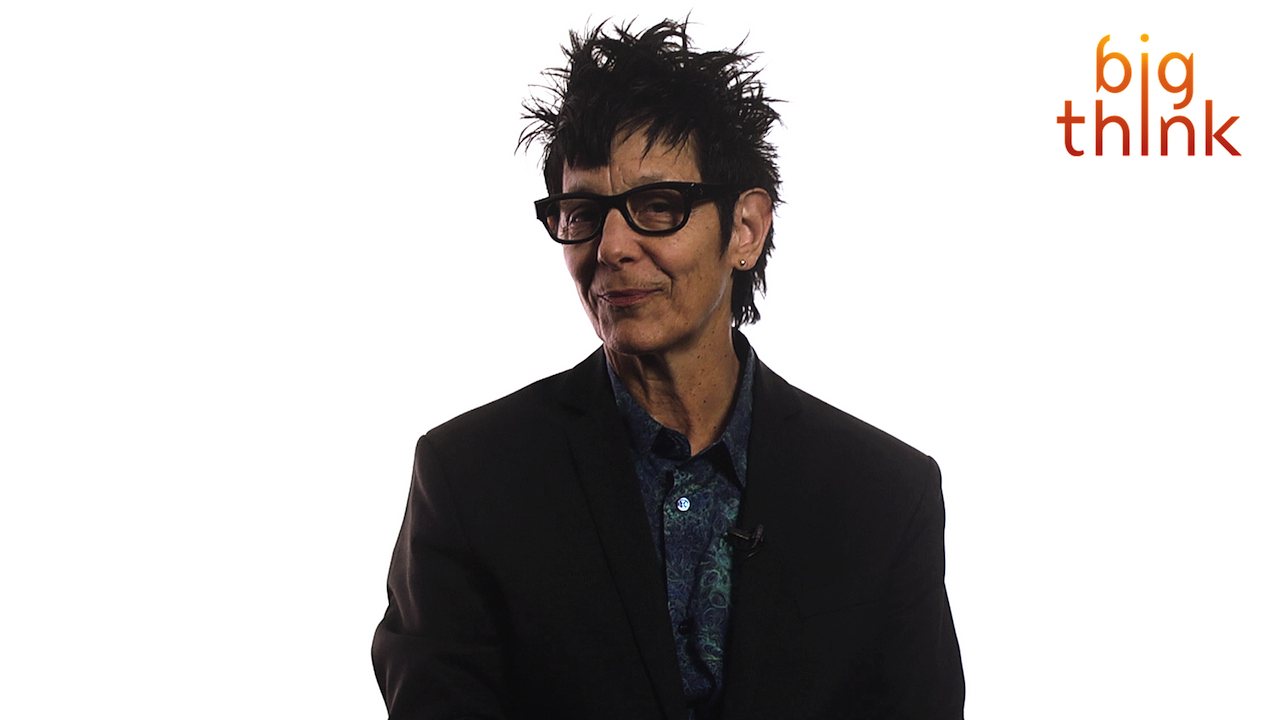Choreographer Elizabeth Streb takes us through the theory and practice of PopAction, her particular brand of extreme action dance. Developed by Streb over the last 20 years, PopAction classes help dancers acquire new skills by posing unique challenges: change your base of support in a rapid fire way, physically designate specific locations in vertical and horizontal space, learn to pop the muscles to initiate action (rather than skeletally transferring weight), train for impact, learn to fly with low-to-the-ground maneuvers that increase spatial awareness, and incorporate a timing system that is not musical but physical (“felt timing”). The classes confront issues of falling and fear. STREB operates on a ‘personal best’ principle; the method suits all body types, ages, and skill sets. All adult classes are taught by current company members.
Elizabeth Streb: PopAction is a form that I and Streb, you know, the larger Streb which is pretty much hundreds and hundreds of dancers at this point have been developing over the last 30 years. If we were just an urban kind of crazy set of action aficionados it would be similar to parkour but because I was in the dance world and located myself in the early seventies in the downtown experimental postmodern dance world I placed a very formal lens over my investigations. The simple idea about PopAction was I believed that humans could fly and that’s where the genesis of the whole idea began by me awkwardly leaping off ladders and crashing to the floor.
I didn’t realize how complicated it would be and how much hardware I’d need and how impractical it is to fly, you know, on every level. So I started really low to the ground and decided that – it was also a theatrical artistic suspicion that I thought no one lands. Like it’s not just flight, it’s a failure of flight. The dance world doesn’t ever land. They spend a lot of technical time camouflaging gravity. The circus never lands, they just swing. It’s beautiful, aesthetic but there’s no rhythm in swinging. They don’t land either. Gymnastics doesn’t land. Only maybe football and American boxing deals with impact. So I early on started to develop a technique for taking the hit when we landed. And I think that the drama of action theater is really embedded in that moment. But I think flight, flips, things that different acrobats do but weren’t considered elitist moments in time and space and body actually are the most exciting moves a human can do. I noticed that and I wanted to embed it into my action scenario more. So it wasn’t just flight. It was how you fly and that you land.
if you examine normal dance and their base of support is usually the bottoms of their feet we shift our base of support. A couple formal principles here in PopAction are just shifting your base of support from the bottoms of your feet which puts you into normal pedestrian spatial locality and maybe landing on your stomach, landing on your back, landing on your shins, landing on your side, landing on your shoulders so that you really resculpt the occupational space the body is in and therefore provide a different point of view or vantage point to the audience.
And then I also believed after the Muybridge plates on human movement potential and animal movement potential that I wanted to remove all transitions, all predictive acts. So the plié you do when you’re going to jump. And I’m not interested theatrically in showing the audience my preparation or my recovery. So it just went down being in unhabitual places in space, encountering danger, inhabiting force fields because I believe that the action experience artistically had to be for the audience a kinesthetic experience, not a storytelling idea.
Gravity is our friend, you know. It’s many people’s, you know, it’s an aberration to them. It’s something that they avoid at all costs. Do not fall down. We – STREB really believes that gravity is the most exciting force on earth. It’s oddly enough out of all the four forces, the weakest. And yet if you hurl your body up a foot off the ground only or even three feet and then you just let it land perfectly horizontally, you’ll get a wallop that you just can’t imagine. And I could invite all your audience to just try it, you know. First on your mattress in your bedroom and then go ahead and do it on the carpeted floor.
But you have to stay perfectly horizontal. I think that gravity is where the content of theatrical action resides. I think that that’s where the drama is. It shows the danger. It shows the force of our world. It shows the bravery of the dancers. And I think it’s a metaphor also. That if you can do that and keep getting up and do it again, it somehow magically spreads a message that you’re willing to let that happen to your body where more privileged people – people that tend to be in higher classes keep harm very, very, very far away from them. And we’re basically letting harm come right into our body, into our corpuscles. And I think that the metaphor that that contains and transfers to anybody witnessing it allows them to think well I could go just a little bit further. I could do just a little bit more. I could be just a little bit braver.
Directed/Produced by Jonathan Fowler, Elizabeth Rodd, and Dillon Fitton




